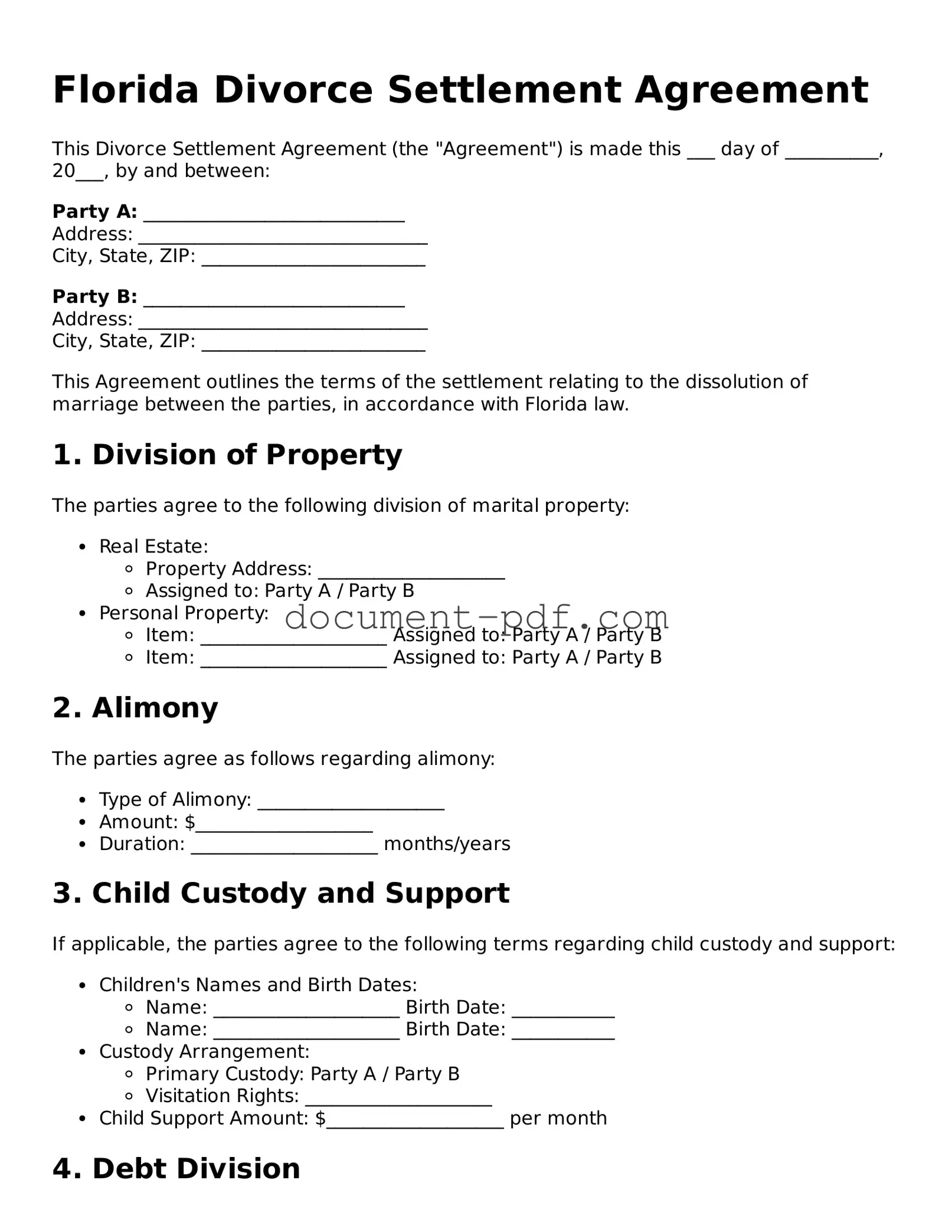Florida Divorce Settlement Agreement
This Divorce Settlement Agreement (the "Agreement") is made this ___ day of __________, 20___, by and between:
Party A: ____________________________
Address: _______________________________
City, State, ZIP: ________________________
Party B: ____________________________
Address: _______________________________
City, State, ZIP: ________________________
This Agreement outlines the terms of the settlement relating to the dissolution of marriage between the parties, in accordance with Florida law.
1. Division of Property
The parties agree to the following division of marital property:
- Real Estate:
- Property Address: ____________________
- Assigned to: Party A / Party B
- Personal Property:
- Item: ____________________ Assigned to: Party A / Party B
- Item: ____________________ Assigned to: Party A / Party B
2. Alimony
The parties agree as follows regarding alimony:
- Type of Alimony: ____________________
- Amount: $___________________
- Duration: ____________________ months/years
3. Child Custody and Support
If applicable, the parties agree to the following terms regarding child custody and support:
- Children's Names and Birth Dates:
- Name: ____________________ Birth Date: ___________
- Name: ____________________ Birth Date: ___________
- Custody Arrangement:
- Primary Custody: Party A / Party B
- Visitation Rights: ____________________
- Child Support Amount: $___________________ per month
4. Debt Division
The parties will also divide debts as follows:
- Debt Type: ______________________ Assigned to: Party A / Party B
- Debt Type: ______________________ Assigned to: Party A / Party B
5. Miscellaneous Provisions
This Agreement also includes the following:
- Governing Law: The laws of the State of Florida will apply.
- Amendments: Any changes must be written and signed by both parties.
- Severability: If any part of this Agreement is unenforceable, the rest shall remain in full effect.
IN WITNESS WHEREOF, the parties have executed this Divorce Settlement Agreement as of the date first above written.
____________________________
Party A Signature
____________________________
Party B Signature
____________________________
Witness Signature
____________________________
Witness Signature
